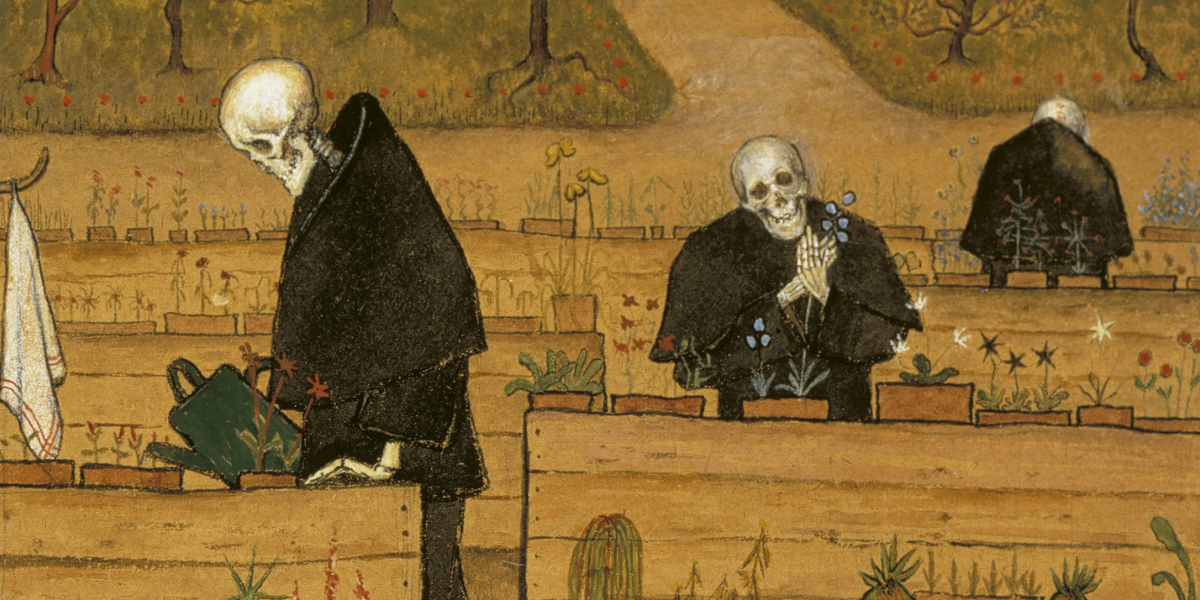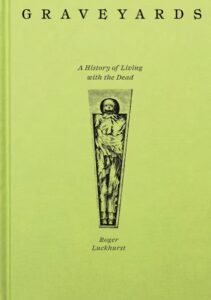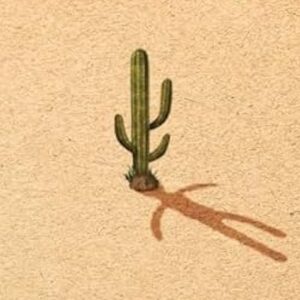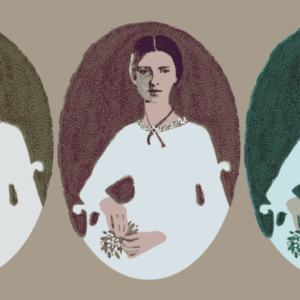
The Ancient Burial Rituals That Have Shaped How We Treat Our Dead
Roger Luckhurst on the Varied Funerary Practices Within Our Cultures—And History
In 1907, Robert Hertz, a French sociologist of religion, published an influential essay called “A Contribution to the Study of the Collective Representation of Death.” He argued that in most human cultures, death unfolds in two stages.
First is the physiological death, the blunt organic event. What follows is an interval in which the death passes into the social realm, leading to a secondary, symbolic death staged in funerary rituals. The phase between these two deaths is a difficult transition for both the corpse and the social organization that must shift the newly dead into a different realm of being—or being-after, not-being. The secondary ritual is often followed by another transitional set of rituals of mourning and remembrance that may extend for days, weeks or years.
There is always an “Other” to be considered “savage” in their treatment of the dead.
The following year, Hertz’s colleague Arnold van Gennep elaborated on this, suggesting a three-stage structure to all rites of passage: separation, transition and incorporation. In the case of customs or rituals, separation is physiological death, transition the liminal phase between physiological and cultural death marked by funeral rites, and incorporation the phase when the corpse is relocated in the social order and the mourning family are reintegrated back into the world of the living.
There is a compelling simplicity to these structural descriptions, even as they allow for maximum variety. In Hertz’s two deaths, the first is biological and universal; the second is representational and open to infinite cultural variation. It is these variations in rites of passage—what Hertz called their “collective representations”—that give cultures of death some of their fascination. Each is a kind of answer to the metaphysical quandary posed by the fact of physiological death. The variety of cultural responses to this question is what this book hopes to convey.
To do that, it first traces some of the significant sites and stages in the very early history of human burial. The practicalities and metaphysics of dealing with the dead have deep roots.
Care for the dead has long been a way of defining what it means to be human. There is always an “Other” to be considered “savage” in their treatment of the dead. Greek and Roman texts both mark out the civility of their own culture in this way. In war, as a text like Homer’s Iliad suggests, one’s own soldiers are elevated to sacrificial victims, glorious in death, while the enemy’s dead are demeaned and denied the rites of proper burial. Victory is over both the living and the dead.
When anthropology began to emerge as a body of knowledge in the nineteenth century, care for the dead was again used as an important way to define humanity. Humans, it was argued by theorists like John Lubbock or Edward Tylor, were the only creatures on the planet who did not abandon their dead, but intentionally deposited their physical remains, developed customs and deposits and belief systems about the passage of a surviving spirit or soul into a place beyond mere physical death.
This journey often needed the care and aid of the living. Charles Darwin’s ideas about the evolution of species across millions of years might have disturbed biblical beliefs in the special creation of man and the fate of individual souls, but it also allowed grand histories of humanity to chart a linear narrative of human progress.
While Darwin was plucking up the courage to publish his theory of natural selection in On the Origin of Species (1859), the emerging discipline of archaeology was excavating new finds that also disturbed assumptions about the origins of man. In the Neandertal valley in Germany, remains were discovered in 1856 that gave the name to a species of hominid that pre-dated, overlapped with and was eventually replaced by modern Homo sapiens about 45,000 years ago.
This find and others like it disturbed not just biblical timescale and narrative, but also suggested that intentional deposition of the dead was not, after all, a distinctive mark of the human. These boundaries began to unravel in deep history.
Funerary practices are multiple and various even within the same cultures.
Human bones can be preserved for millennia in the right conditions, and so it is burial sites that often hold the most traces of hominid cultures and practices. Biochemical advances in dating artefacts and remains continue to push back the date of the earliest intentional deposition. This very early history is in an almost constant state of radical revision.
What bones cannot do, of course, is speak directly about the cultural meanings or beliefs that constitute much of the activity in the liminal phase between actual and symbolic death, or the later phases of memorialization. These meanings have been inferred from evidence, and are often fiercely debated: so much is speculative projection.
What the evidence does suggest is that there is no linear progression of burial practices and the development of burial grounds or cemeteries. There is no single timeline. Funerary practices are multiple and various even within the same cultures. Instead, we need to think about patchworks of customs that emerge with local variation, responding to their specific environments.
The earliest remains of hominids to date, long pre-existing Homo sapiens, were found in Hadar, Ethiopia. They are three million years old. Several hundred hominid remains were found at this site, probably deposited there as a result of the action of the river in this delta region, although the clustering of some of the bodies has been interpreted as more meaningful than mere geological accident.
As Donald Johnson details, since its beginnings in 1970, research about the Hadar site has offered a tension that will keep recurring in this history. On the one hand, a nearly complete skeleton of a female Australopithecus afarensis hominid found in 1974 was named “Lucy”’ humanizing the remains and pulling us towards identification across eons.
On the other hand, there are signs of what Paul Pettitt, an expert in Palaeolithic burials, calls “carcass processing”: cut marks and striations on the bones that suggest defleshing, the deliberate removal of soft tissue after death using stone tools. This might have been ritualistic, or to prepare the bodies for eating—or both.
These marks are found again on remains at Gran Dolina in Spain. The ten bodies there were placed in the same location: does that imply intentional depositing of the bodies, or was it just a pit for the discarded bones of consumed carcasses? The specter of cannibalism marks out another edge of what it might mean to be human.
*
Caves, which provided natural shelters for nomadic groups of hunters, give some of the earliest known indications of “structured abandonment” or “funeral caching”: the deliberate depositing of the dead in features of the landscape. The discoveries at Gran Dolina and associated sites in northern Spain were made in cave systems that have been dated, using the remains excavated there, to over 600,000 years. The sites’ seemingly narrow selection of bodies—young male and female adults—suggests that they were used intentionally. Can we yet think of such places as “cemeteries?”
Early burials are often placed in a flexed position: a fetal crouch, lying on one side, one arm sometimes under the chin as though to mimic sleep.
In the period in which several members of the hominid species co-existed, the evidence for intentional burial becomes more secure. Four caves in the Mount Carmel region, now in Israel, contain half a million years of evidence of use by different hominid groups. The discovery of the remains of ten near-complete individuals, seven adults and three children, in the Es-Skhul cave in the 1920s have since been dated to between 100,000 and 130,000 years old.
Initially categorized as perhaps a “missing link” between Neanderthal and Homo sapiens, these are now considered very early humans. Four of these bodies seem to have been deliberately buried in shallow scoops in the earth, with some evidence of formal placement. Early burials are often placed in a flexed position: a fetal crouch, lying on one side, one arm sometimes under the chin as though to mimic sleep.
At Es-Skhul, the remains are mixed with animal bones. One body was found with a wild boar mandible placed on its chest. Shells from the site were, writes Paul Pettitt, probably introduced as decorative objects for the body, since the coast where they were collected was miles away. A lot of these elements could be claimed as early “grave goods”: items with specific meanings chosen to be inhumed with the body. Evidence like this asks us to infer the start of structure beliefs about death and burial.
In the Qafzeh cave in the same region, a cache of thirteen early Homo sapiens, between 90,000 and 100,000 years old, was first excavated in 1934, with associated bodies discovered at the site over the next forty years. Some graves contain perforated shells, perhaps worn as a necklace stone implements and a mix of animal bones, including in one case antlers placed on top of the body. Antlers, suggesting an association with hunting, are common presence in early graves.
The remains at Qafzeh were stained with red ochre, now recognized as a distinctive mark of burials in this era. The meaning of the red ochre, a clay ground into a pigment, is debated: did it dye clothes or headdresses, or was it more symbolic, suggestive of blood or fire or rebirth?
Just in time for the counter-cultural 1960s, the Neanderthals were declared “the first flower people,” a pacifist group who were likely killed off by their violent, warring competitors, Homo sapiens.
Another significant find was made in the Shanidar Cave in the Kurdistan region of northern Iraq in 1915. The bodies in the cave were a mix of late Neanderthal and early Homo sapiens, and show signs of defleshing. Then-new excavation techniques detected the presence of several kinds of pollen with the remains of one Neanderthal body, Shanidar 4.
In his popular account of the excavation, the lead archaeologist, Ralph Solecki, famously argued that these were evidence that funeral flowers had been placed in the grave, and that “in Neanderthal Man we recognize the first stirrings of the concept of man caring for his own, a sense of belonging and family.” This blurred the boundary line of human beginnings and recast previous characterizations of Neanderthals as brutish creatures. Just in time for the counter-cultural 1960s, the Neanderthals were declared “the first flower people,” a pacifist group who were likely killed off by their violent, warring competitors, Homo sapiens.
This thesis was pursued in William Golding’s novel The Inheritors (1955), which sympathetically imagined one of the last bands of Neanderthals, sensitive mourners of their own dead, killed off by the relentless encroachment of vicious humans. The popularity of this “flower burial” thesis suggests an investment in humanizing these origins, but Solecki’s theory is widely disputed. A decidedly less romantic explanation of the pollen is that seeds were left behind in the excreta of burrowing animals that fed on the bodies.
In the Dordogne, less than a kilometer from the famous rock paintings in the caves at Lascaux, another Neanderthal skeleton was found in the Regourdou Cave. Cave art in this area is often used as another marker of the exceptional nature of hominids, and this discovery added another element to knowledge of early burials: the use of stones carried from elsewhere to build a tumulus over the body.
The well-preserved skeleton was surrounded by bear bones, hinting at a pattern involving animals, feasts at burial and sacrificial offerings. Paul Pettitt proposes that this site might be not just a very early grave marker, but effectively an early tomb construction.
*
The oldest known site of a cremation is at Lake Mungo in New South Wales, Australia. Found in 1968 on the shore of the lake—a symbolic place of transition between land and water—the remains of a woman show evidence of having been burned post-mortem, the remaining bones smashed into fragments, further burned and then gathered and buried in a shallow pit.
Different systems of knowledge and belief tangle in these bones.
The remains have been dated to around 26,000 years old and imply several stages in the interval between physical death and the final burial. A second, older skeleton of a man was found nearby in 1974. The estimate of how old the male body is has increased to over 40,000 as new dating techniques have emerged.
These remains were significant as archaeological evidence of Indigenous Australians’ long presence on the land mass. Mungo Man and Mungo Lady were taken to Australian National University, where they were held until, after long years of negotiations, they were repatriated to the traditional owners of the Willandra Lakes region, the Barkandji, Ngiyampaa and Mutthi Mutthi—Mungo Lady in 1992, Mungo Man in 2015. The remains were reburied at Lake Mungo in 2017. Different systems of knowledge and belief tangle in these bones.
Cremation is anathema to some religious beliefs—Jewish and Muslim cultures tend to prefer burial, as did Christianity for many centuries. But there is rarely a fixed rule to be found, and many cultures have switched preferences over time. Decisions and norms can drift slowly into new practices, or undergo sudden shifts of taste or symbolic meaning that can be very hard to recapture.
*
In northern Chile, at the mouth of the Azapa and Camarones Rivers, the group burials of bodies that emerge from the Chinchorro culture (c. 7000-1700 BCE) show a striking set of posthumous interventions. They are thought to be the oldest mummified bodies in the world, pre-dating their more famous companions from Ancient Egypt by 2,000 years. Mummification offers a wholly different solution to the enigmatic question posed by death.
This coastal fishing culture came to mummification through the natural preservative properties of the earth and desert in their region. The oldest naturally “mummified” body in the area has been dated to 7000 BCE, and was found in the extremely drying, salty, preservative sands of the Atacama desert.
Thousands of years later, the same desert was used to conceal the bodies of leftists murdered under General Pinochet’s military dictatorship. The Chinchorro burials have been widely exoticized, perhaps because they represent an extremely active instance of the posthumous processing of bodies in ways that have seemed decidedly “alien” to other cultures.
Ideas of Indigenous South and Central Americans as “savage” and a fixation on practices like head-hunting were particular features of European popular culture in the early twentieth century, the same period in which these mummified remains were documented by the German archaeologist Max Uhle. Chinchorro bodies were initially buried to dry out naturally, then recovered and put to posthumous use in the culture.
From about 5050 BCE, techniques for artificial mummification began to be developed. The bodies of the newly dead were heat-dried with fire before skin and soft flesh were removed. Arms and legs were detached and defleshed, and the main body cavities emptied and filled with vegetable matter or clay. The head was decapitated, the skull split and brain removed before being recreated. Some were covered by wigs woven from human hair; some have heavy mask-like layers built up over their facial features.
Finally, the body was reconstructed. A new skin was made, sometimes from clay, sometimes from sea lion skins and other animal elements such as whalebones. The body was then painted in a thick black tar (sometimes tinted red), which strengthened it for energetic rounds of communal display or procession. The Chinchorro also made “statuette mummies” from fetal remains or very young infants.
This very early history suggests that many core elements of the treatment of the dead emerged on the cusp of the appearance of human cultures.
Mummified remains circulated in Chinchorro society before being buried again, for the final time, in clusters that constitute cemeteries (in 1983, over 100 burials were found in one site in Arica during building works). These practices evolved over millennia, their variations aiding the dating of bodies.
The transformation and extension of the life of the physical remains suggest the dead moving among the living, perhaps in processions or displays, although their use remains largely open to speculation. Only a small group underwent this process of posthumous modification: fewer than 300 mummies of this type have been recovered, and other burials from the era show more straightforward practices of inhumation.
The Chilean anthropologist Bernardo Arriaza has suggested that these bodies underpin continuity and social reproduction, rather than the concerns with social hierarchy or status reflected by the later Inca practice of mummifying and displaying leaders or heading into battle with effigies of their dead warriors.
*
This very early history suggests that many core elements of the treatment of the dead emerged on the cusp of the appearance of human cultures. Ritual processing can be evidenced from about 30,000 years ago, and the origin of cemeteries—distinct places for the dead, spatially separated from the living, recognized communally and used repeatedly over time—are currently dated to between 11,000 and 14,000 years ago.
The millennia after the Ice Age are rich in evidence of burial customs, yet in many cases these physical traces remain hauntingly silent: sometimes uncannily familiar, sometimes disturbingly alien, more often both at once. How these remains are interpreted often speaks more to our contemporary concerns, read into the barest traces in the physical record.
The end of the Last Glacial Period and the turn to more settled communities is often associated with the development of agriculture and the domestication of animals. These sedentary cultures had a new problem: the steady accumulation of the dead, and what to do with them. A pairing of the city of the living with the city of the dead began to develop. Cemeteries arrive with settlement.
__________________________________

From Graveyards: A History of Living with the Dead. Used with the permission of the publisher, Princeton University Press. Copyright © 2025 by Roger Luckhurst.
Roger Luckhurst
Roger Luckhurst is a British writer and academic and since 2020 the Geoffrey Tillotson Chair of Nineteenth Century Studies at Birkbeck College.












